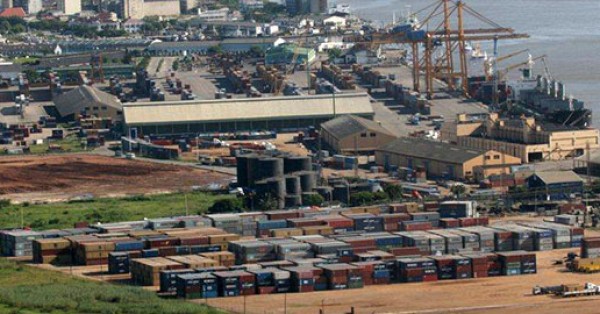The U.K.’s Manufacturing Technology Centre is a leader in advanced manufacturing, boasting an impressive array of automated technology and robotics systems for digitization, additive manufacturing, automation, and more. Not to mention the independent research and technological group’s primary focus on developing processes and industrial systems across multiple sectors, such as aerospace engineering and agriculture technologies, among many others.
At the 5G Manufacturing Forum, Dr. Alejandra Matamoros – Technology Manager for MTC – discussed technology transformation in the manufacturing industry and how private networks can leverage legacy environments with 5G capabilities. She explained that it’s not just creating new things but deploying this digital revolution across factories worldwide. Connectivity in the industrial world is far from uniform, which presents a great difficulty. For example, manufacturing facilities are full of various devices with different technology types, each sending data that differs drastically in format or communication channels.
In some cases, there is no data available. To make operations and processes more intelligent, it’s essential to create access to this data and address security concerns that may be caused by connecting disparate systems. Only then will potential disruptions or interference be prevented from occurring.
In collaboration with nexGWorx and MTC, BT successfully deployed a Release 15 5G network based on Nokia technology. Through the setup of modems, servers, and Multi-Access Edge Computing (MEC) connected to local radio antennas across various places at MTC using a shared access spectrum between 2.8-4.2 GHz., this network was able to provide maximum speeds of up to 100 Mbps for uplink transmissions while downlink transfers can reach 700 – 800 Mbps within 10 – 15 milliseconds latency range. What’s more impressive is that it enabled an experimental use case: an automated visual inspection system through 5G networks. MTC’s priority was introducing their engineers to the potential of 5G networks for industrial automation, computer vision, and robotic applications. Matamoros clarified that this project would also help them understand how infrastructure deployment is necessary for such use cases.
Matamoros explained that automated visual inspection is a versatile use case, as it can be found in many industries. After all, when components of various shapes and sizes have to meet design tolerances during production processes, traditional manual inspections are often time-consuming and prone to human error. Additionally, records and traceability are necessities across industrial verticals. In other words, this kind of automation has become an indispensable tool for many companies today due to its accurate results and seamless record-keeping capabilities.
MTC envisioned automated inspection of regular metal brackets to keep the complex manufacturing process running smoothly.
Knowing that a large number of individuals manufactured parts needed daily scrutiny for compliance, MTS sought ways to optimize these systems and guarantee that all components meet quality requirements. Achieving the necessary level of performance for automated visual inspection took careful planning and analysis of both the MTC environment and the requirements of the use case that MTC wanted to enable. Matamoros highlighted that there are numerous machines and metallic structures present in the area, which could potentially interfere with our network.
According to Dave Barrett, BT’s principal architect for 5G private network strategy and development, a successful foundation for this type of network begins with customer requirements. It is necessary to consider use cases alongside performance needs, such as uplink/downlink latency, the coverage area, and the number of devices needed to build an efficient system.
The complexity of constructing a resilient system is considerable. We must consider radio coverage area, capacity within the region, and connectivity between legacy systems and 5G solutions. All these pieces take time to organize effectively, but they are crucial when it comes down to designing an effective solution.
According to Andy MacKenzie, project director of nexGworx, constructing a 5G network goes beyond the technical aspects. It requires understanding why you are building it, where you’re constructing it and what purpose it will serve when completed. As part of this process, his team provided essential communication and coordination that helped each partner comprehend their needs and abilities and eventually linked them into one working system.
Before we began, Matamoros and her team worked with us to define our objectives: what were we trying to show? What did success look like? And how we would measure it when completed. This system was amongst the first of its kind ever established, so everyone had an opportunity to learn as it evolved during Covid times. Our job then became about managing progress towards remaining focused on meeting our commitments.
According to Barrett, it is vitally important when devising a new network system for any manufacturing purpose to never take anything for granted regarding how the system will be used. It’s imperative to have comprehensive discussions with the industrial partner and completely comprehend the use case’s requirements before continuing – then those specifications must remain consistent throughout development.
“Having visibility is vital,” he expressed. “When setting up networks, seeing what is happening and being proactive to solve issues without delay should be a priority.” Moreover, the operating partner must have a smooth handover and acceptance of the network. He continued, “You can develop networks that will work at an adequate level, but if you don’t set clear requirements for completion, then there could be problems later down the line.”
As 5G standards constantly advance, private 5G networks will continue to grow and expand their greenfield and legacy manufacturing offerings. We’re actively working on ways to boost performance throughput with radio frame adaptation, Release 16, 17, 18 features….and much more. According to Barrett from BT, private networks offer a tremendous variety of potential applications with 5G. From low-level telemetry data needs to highly advanced ones, this new technology can adapt according to different sites and amazingly use cases – it’s simply powerful.
Take advantage of the opportunity to watch the 5G Manufacturing Forum’s comprehensive session and additional content on demand.






























